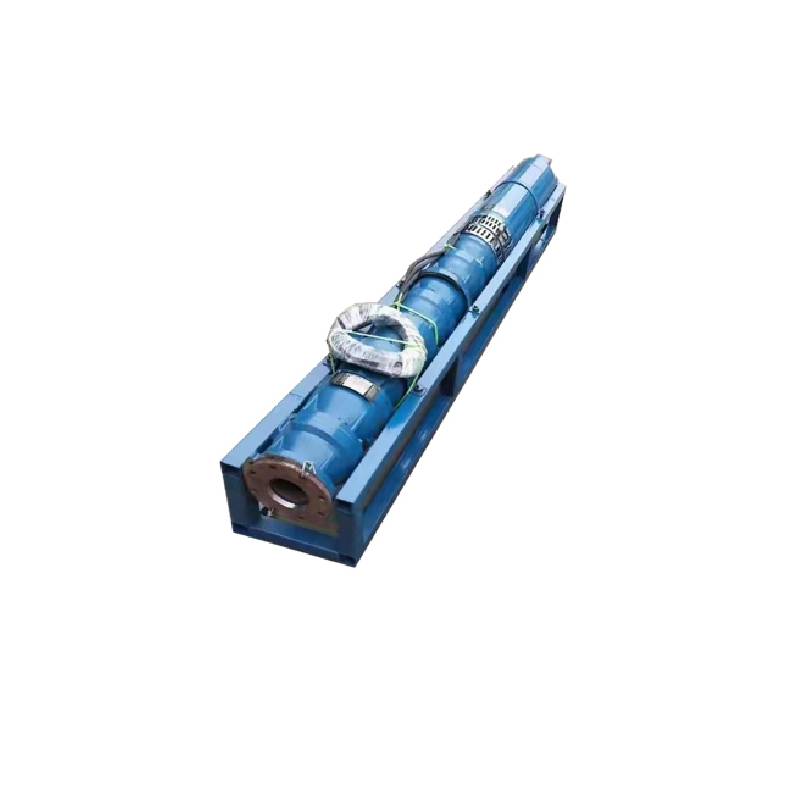Nov . 29, 2024 20:37 Back to list
Comparison of Deep Well Pumps and Submersible Pumps for Efficient Water Extraction
Deep Well Pump vs. Submersible Pump Understanding the Differences and Applications
When it comes to extracting water from deep underground sources, two primary types of pumps are often considered deep well pumps and submersible pumps. While both are designed for similar purposes, they have distinct features, benefits, and applications that make each suitable for different situations. This article aims to elucidate the key differences between these two types of pumps and help users determine which is most appropriate for their needs.
Overview of Deep Well Pumps
Deep well pumps are designed to lift water from depths typically greater than 25 feet. They work using a vertical turbine design that allows water to be pulled up from the ground through a series of impellers. These pumps are usually installed above ground, with a long shaft extending down into the well, connecting the motor to the pump components submerged in water.
Advantages of Deep Well Pumps 1. High Efficiency Deep well pumps are known for their efficiency in moving large volumes of water, especially in applications requiring high flow rates. 2. Long Lifespan Since most of the mechanical components are above ground and can be easily accessed, maintenance and repairs are generally straightforward. This contributes to the longer lifespan of deep well pumps. 3. Versatility These pumps can be used in various applications, including agriculture, municipal systems, and industrial processes, making them a flexible choice.
Disadvantages of Deep Well Pumps 1. Installation Complexity Installing a deep well pump requires careful setup and alignment, which can be complicated and may necessitate professional assistance. 2. Higher Initial Cost The cost of purchasing and installing deep well pumps can be higher compared to submersible pumps, making them less accessible for smaller operations.
Overview of Submersible Pumps
deep well pump vs submersible

In contrast, submersible pumps are designed to operate underwater. The entire pump is placed beneath the water level within the well, allowing it to push water to the surface without needing extensive suction head. Submersible pumps typically consist of a hermetically sealed motor that drives the pump impeller.
Advantages of Submersible Pumps 1. Space Efficiency Since submersible pumps are installed underwater, they save space and do not require extensive above-ground infrastructure. 2. Energy Efficiency These pumps often consume less electricity because they are designed to push water up rather than pull it, leading to lower operational costs. 3. Reduced Noise Being submerged in water, submersible pumps operate quietly compared to deep well pumps, which can be particularly beneficial in residential settings.
Disadvantages of Submersible Pumps 1. Maintenance Challenges Accessing a submersible pump for maintenance or repair can be difficult, as it requires pulling the entire unit from the well, which can be labor-intensive. 2. Limited Lifespan Since all components are submerged in water and exposed to harsh conditions, submersible pumps may have a shorter lifespan than deep well pumps.
Conclusion Choosing the Right Pump
The decision between a deep well pump and a submersible pump ultimately depends on the specific requirements of the application. For scenarios where high flow rates are essential, and maintenance access is a priority, deep well pumps are often the preferred choice. Conversely, for installations where space is limited, energy efficiency is vital, and sound levels need to be minimized, submersible pumps may be the better option.
Both types of pumps have unique characteristics that make them suitable for different situations. Assessing factors such as installation depth, water demand, maintenance capabilities, and budget will aid in making an informed decision. Understanding these differences ensures that users can select the right equipment for effective and efficient water extraction from deep well sources.
-
Submersible Water Pump: The Efficient 'Power Pioneer' of the Underwater World
NewsJul.01,2025
-
Submersible Pond Pump: The Hidden Guardian of Water Landscape Ecology
NewsJul.01,2025
-
Stainless Well Pump: A Reliable and Durable Pumping Main Force
NewsJul.01,2025
-
Stainless Steel Submersible Pump: An Efficient and Versatile Tool for Underwater Operations
NewsJul.01,2025
-
Deep Well Submersible Pump: An Efficient 'Sucker' of Groundwater Sources
NewsJul.01,2025
-
Deep Water Well Pump: An Efficient 'Sucker' of Groundwater Sources
NewsJul.01,2025
-
 Submersible Water Pump: The Efficient 'Power Pioneer' of the Underwater WorldIn the field of hydraulic equipment, the Submersible Water Pump has become the core equipment for underwater operations and water resource transportation due to its unique design and excellent performance.Detail
Submersible Water Pump: The Efficient 'Power Pioneer' of the Underwater WorldIn the field of hydraulic equipment, the Submersible Water Pump has become the core equipment for underwater operations and water resource transportation due to its unique design and excellent performance.Detail -
 Submersible Pond Pump: The Hidden Guardian of Water Landscape EcologyIn courtyard landscapes, ecological ponds, and even small-scale water conservancy projects, there is a silent yet indispensable equipment - the Submersible Pond Pump.Detail
Submersible Pond Pump: The Hidden Guardian of Water Landscape EcologyIn courtyard landscapes, ecological ponds, and even small-scale water conservancy projects, there is a silent yet indispensable equipment - the Submersible Pond Pump.Detail -
 Stainless Well Pump: A Reliable and Durable Pumping Main ForceIn the field of water resource transportation, Stainless Well Pump has become the core equipment for various pumping scenarios with its excellent performance and reliable quality.Detail
Stainless Well Pump: A Reliable and Durable Pumping Main ForceIn the field of water resource transportation, Stainless Well Pump has become the core equipment for various pumping scenarios with its excellent performance and reliable quality.Detail
